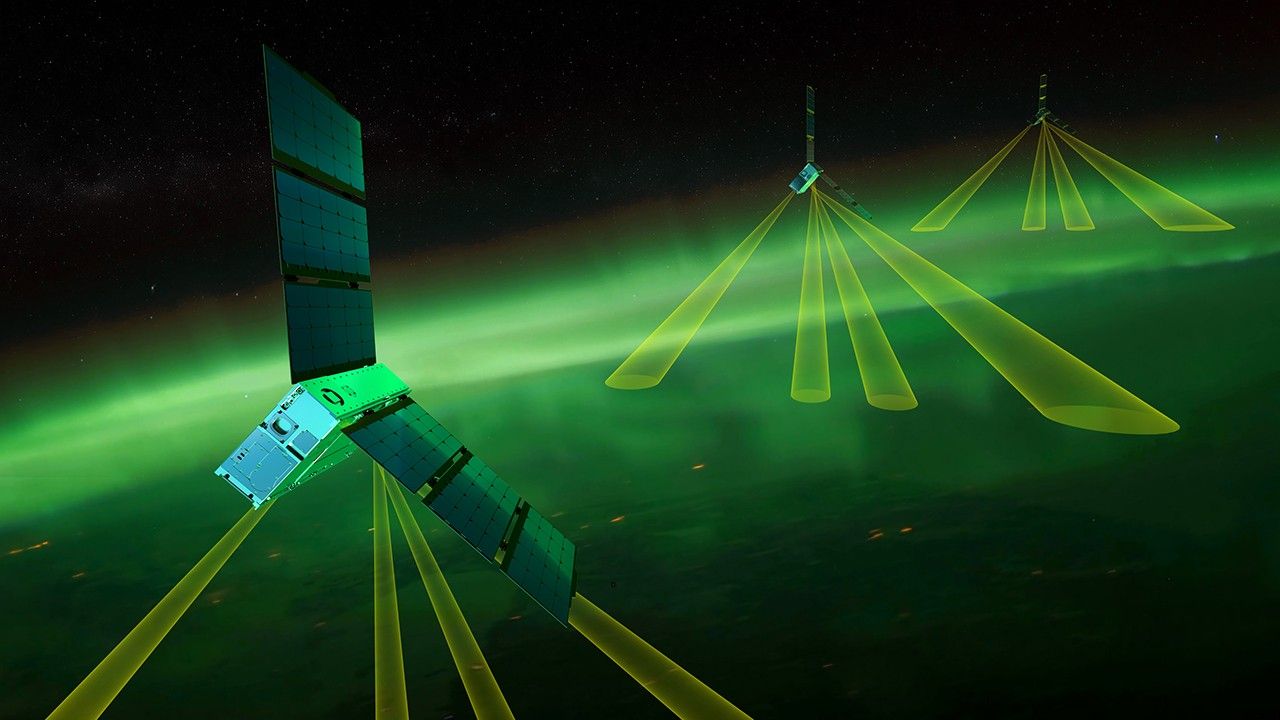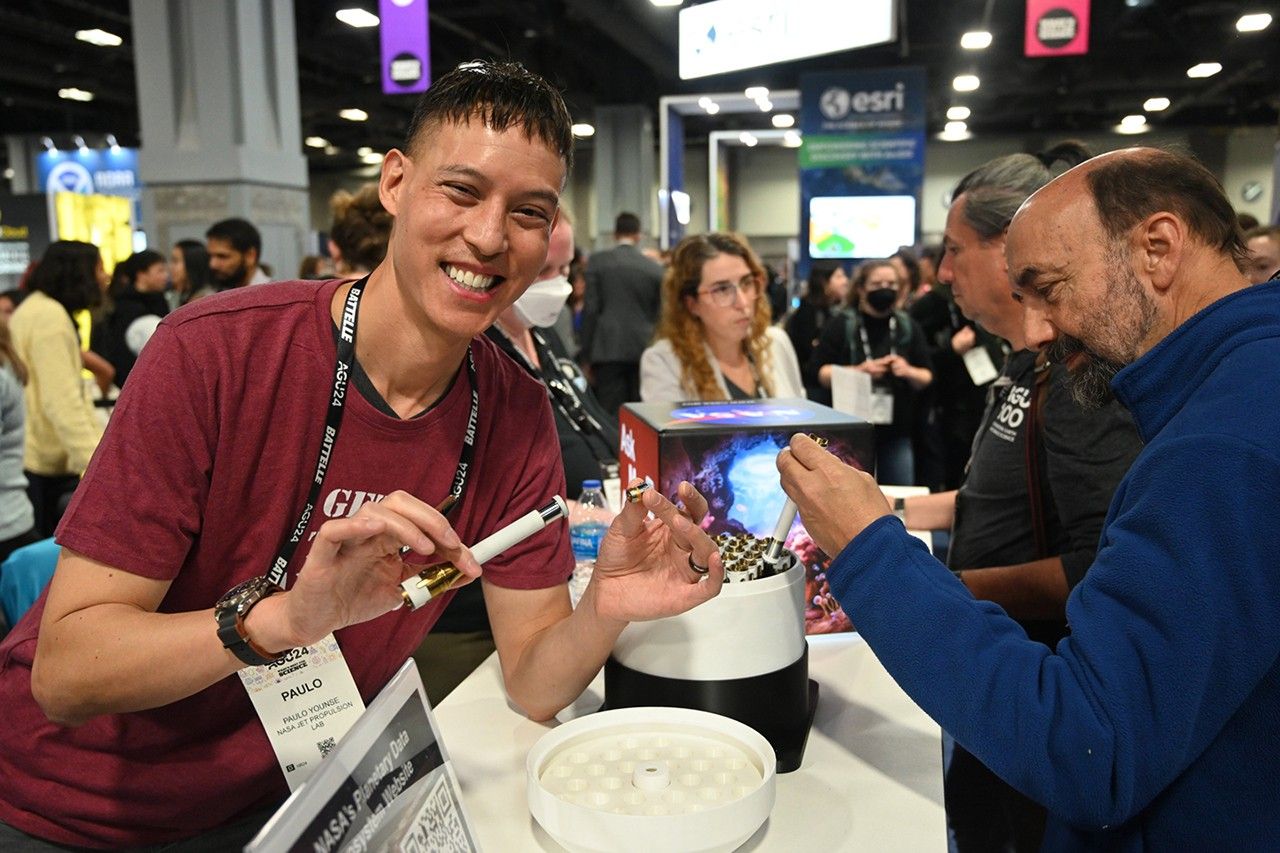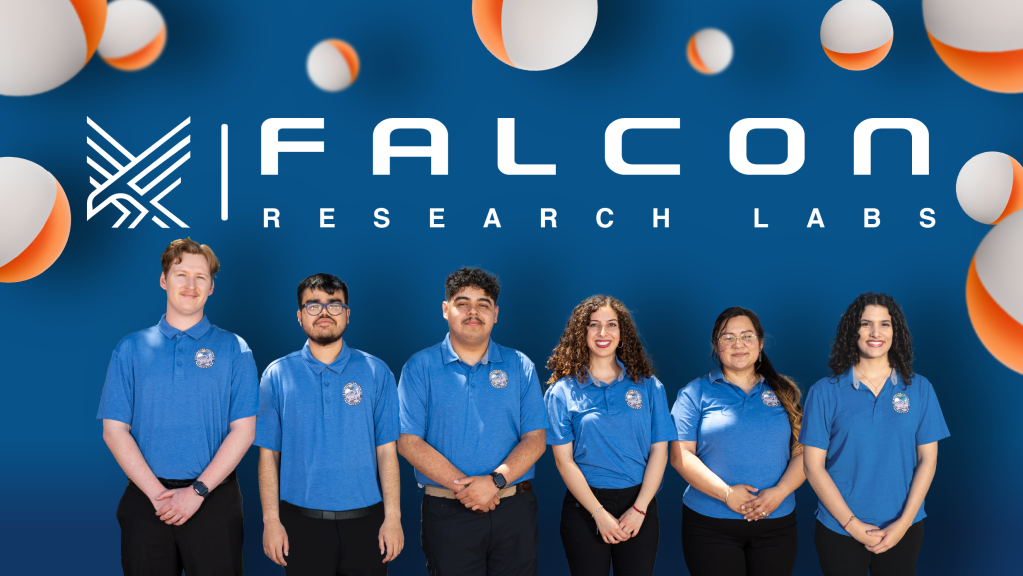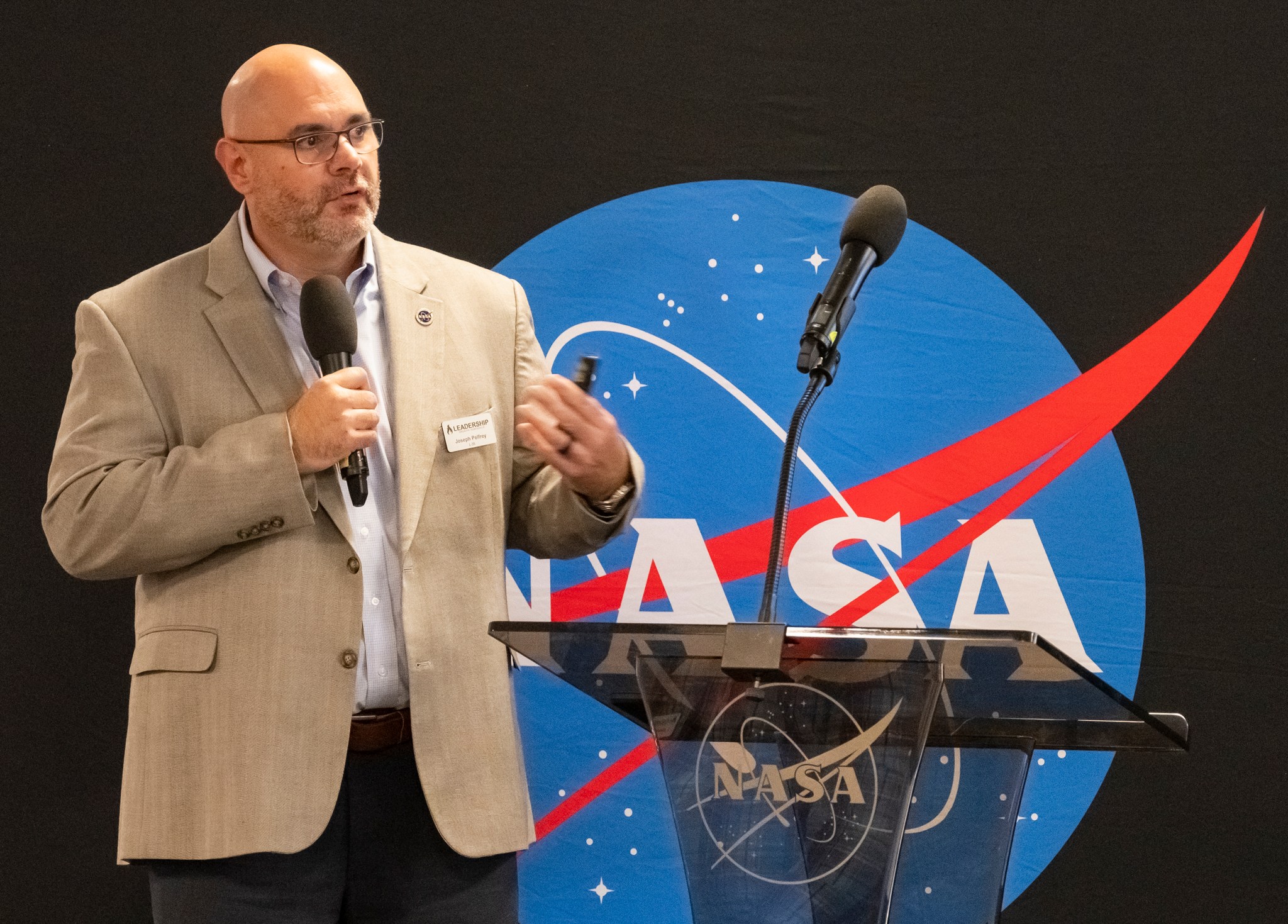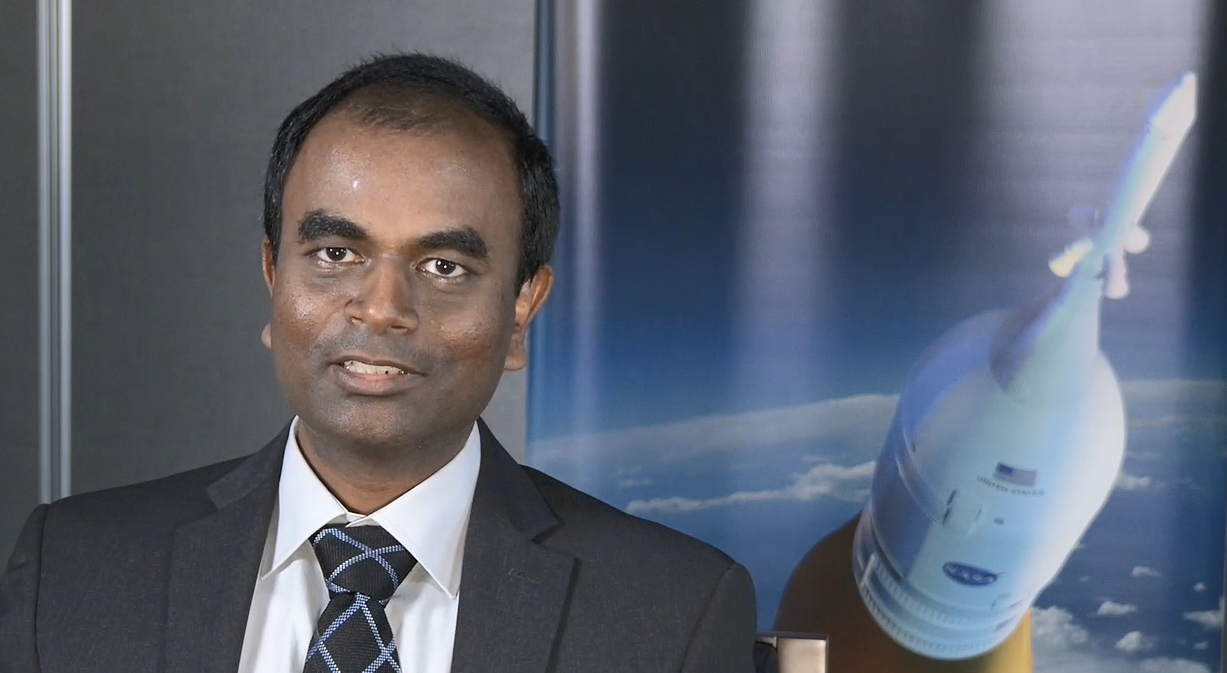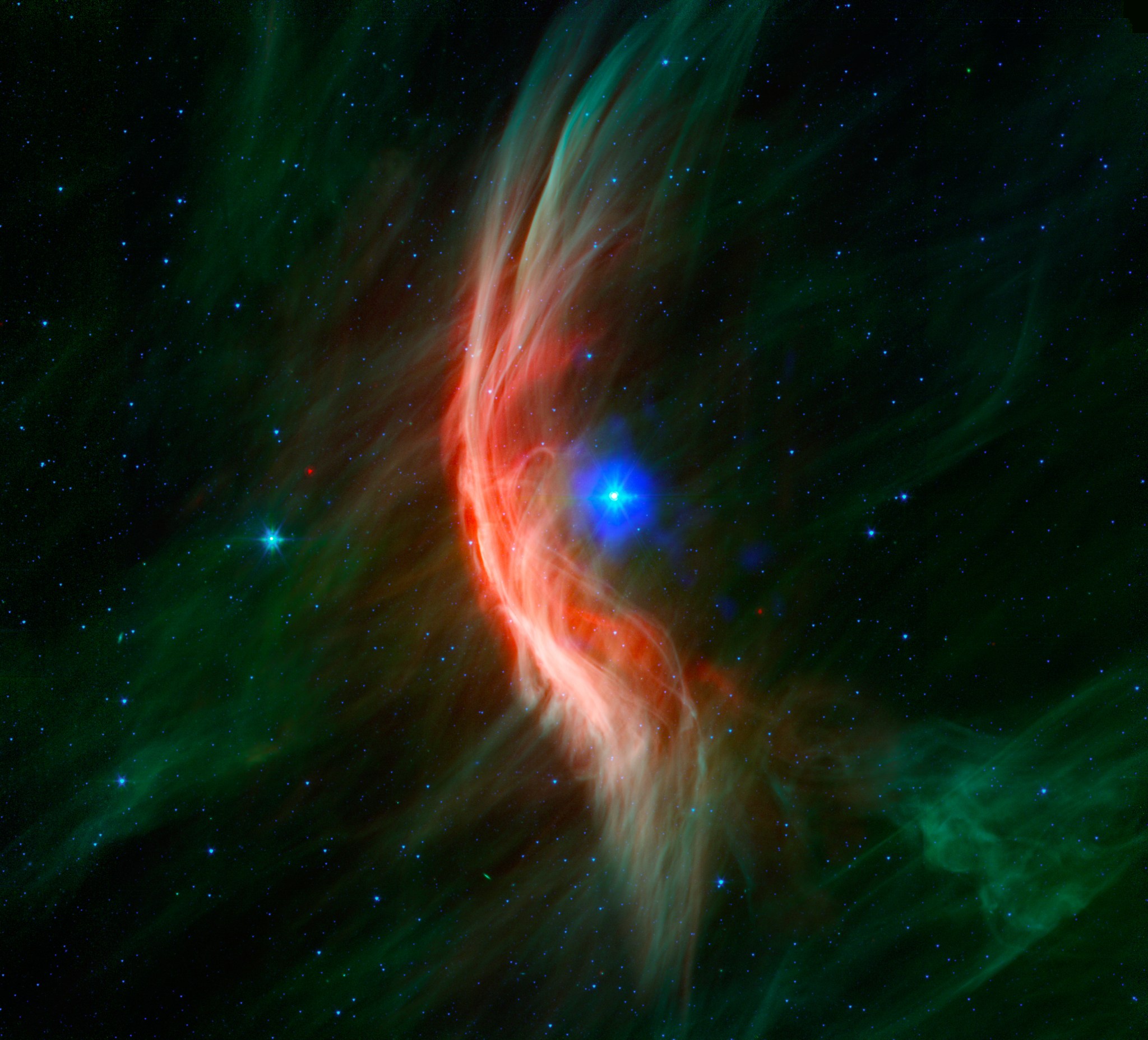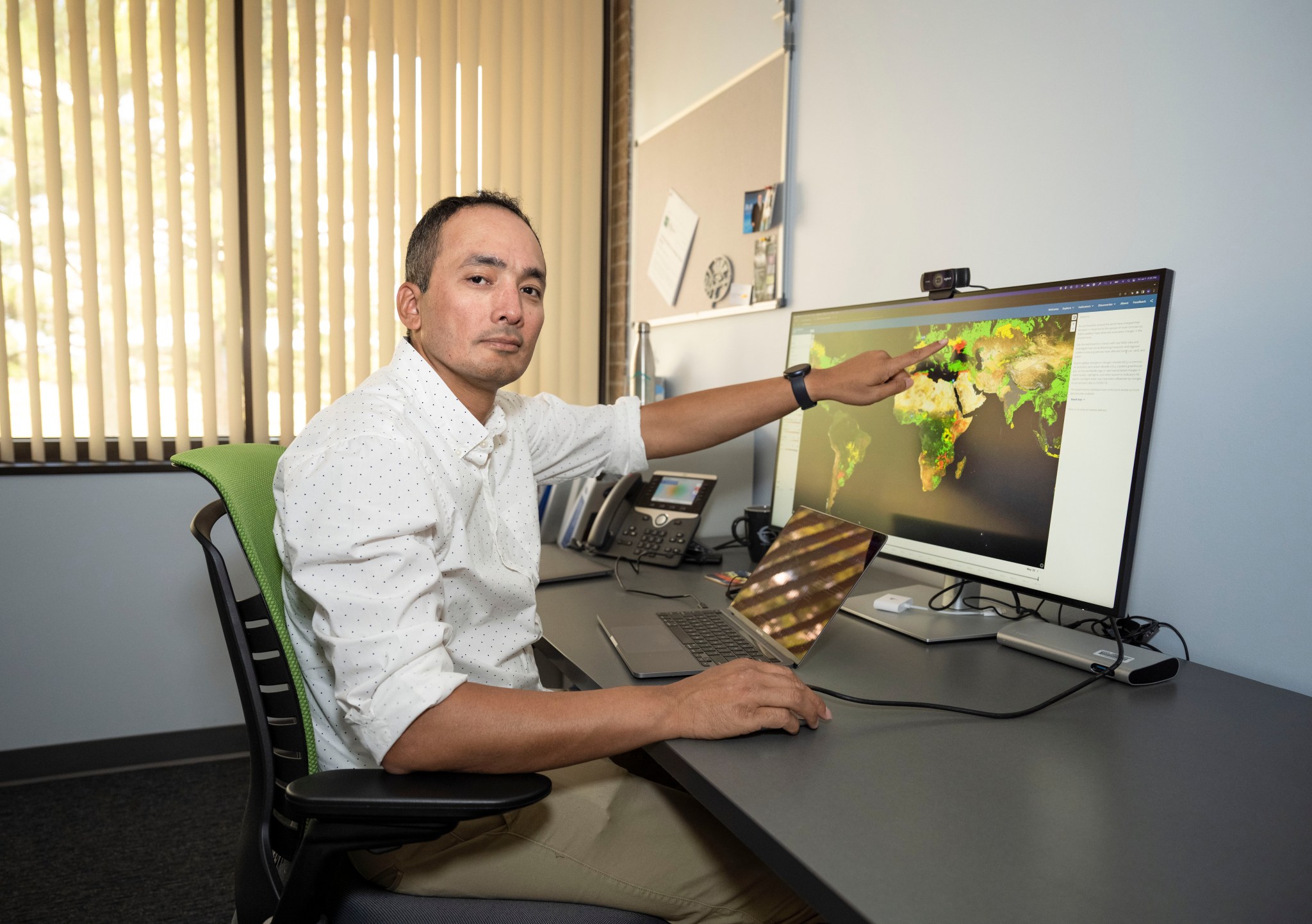In This Week’s Star
- Small-Town Roots Helped Joseph Pelfrey Grow into NASA Marshall Leader
- Lead-up to Launch: Naveen Vetcha
- Marshall Team Receives Honor at Agency Small Business Advocates Awards
- Designing the Space Launch System
- Embracing a Rejected Star
- International Space Agency Teamwork puts the Whole World in our Hands
- Benefits of Space Station Research, Development Highlighted on ‘This Week at NASA’
Small-Town Roots Helped Joseph Pelfrey Grow into NASA Marshall Leader
By Daniel Boyette
For Joseph Pelfrey, growing up in Cheraw, South Carolina, was idyllic. Most of his family lived in or near the town of less than 6,000, so large gatherings were common. He also enjoyed outdoor activities and spending time with friends.
“In a community where most everyone knows you, it was easy to have lots of people in your corner,” said Pelfrey, who in April was named deputy director of NASA’s Marshall Space Flight Center. “As I grew older, I found I wanted more than my small town could offer, which led to the next steps in my journey.”
One of those people in Pelfrey’s corner was a high school math teacher, Gladys Sweeney. She ensured that Pelfrey was accountable for his educational development and recognized that he was capable of more. She and his parents helped him apply to the South Carolina Governor’s School for Science and Math in Hartsville, a two-year residential high school focused on advanced science, technology, engineering, and math education for the top 1% of students in the state.
“I left home at 16 and finished my high school years forming a great foundation that would take me to Auburn University to major in aerospace engineering,” Pelfrey said. “The governor’s school was also the place I met my future wife, Nicole.”
Pelfrey joined Marshall as a civil servant in 2004 after several roles in industry, and he went on to hold multiple leadership positions in engineering and project offices. Those roles helped prepare him for the challenge of being Marshall’s deputy director, a job in which he assists in leading the center’s nearly 7,000 civil service and contractor employees while overseeing an annual budget of approximately $4 billion.
“Our team is incredible,” Pelfrey said. “In all my roles, I’ve been surrounded with great teammates who demonstrate a level of innovation and commitment beyond expectations. NASA’s mission affords us an opportunity to do some incredibly challenging things, and it’s been fun to watch our teams, both government and industry, advance our exploration goals.
“I’ve also had the opportunity to grow, developing my own leadership style and continuously looking for ways to improve. Through these opportunities, I have developed a leadership philosophy rooted in five attributes: shared accountability, challenge the status quo, stay curious, practice transparency, and be mission-focused.”
Pelfrey also helps guide Marshall’s portfolio of human spaceflight, science, and technology development efforts. He had the opportunity to contribute to all three areas in his previous role as manager of Marshall’s Human Exploration Development & Operations Office. The office oversees Marshall’s work in human exploration and transportation projects; habitation systems; payload and mission operations and integration; and International Space Station payload, facility, and environmental control and life support systems.
“NASA’s work in low-earth orbit has spurred a growing space enterprise and a desire to explore even further,” Pelfrey said. “There are still many frontiers to pursue, and it’s exciting to think of all the incredible things waiting to be discovered.”
When it’s time to “unplug” and step away from work, Pelfrey makes family a priority. That includes camping, swimming, Auburn University football weekends, and cruises. He also serves in his church and enjoys helping others. His personal time is usually spent on projects around the house, hunting, or working on his project car – a 1958 Austin Healey Sprite.
Obstacles are part of the territory when it comes to science and space exploration. Pelfrey acknowledges that hurdles lie ahead, but he remains undaunted in his quest to help Marshall and NASA achieve their missions throughout the cosmos.
“Marshall is adapting and will need to continue adapting to new operating models to solve challenges of the future,” he said. “We will need to focus our pursuits to capture new ideas, missions, and partnership opportunities.”
“We have many great things to look forward to, delivering on current commitments and formulating new opportunities to expand our portfolio. Marshall will meet its strategic goals while serving a key role in meeting those of the agency.”
Boyette, an LSINC employee, supports Marshall’s Office of Strategic Analysis & Communications.
Lead-up to Launch: Naveen Vetcha
As NASA approaches the Artemis I launch, the Marshall Star is spotlighting team members at the agency’s Marshall Space Flight Center and Michoud Assembly Facility and how they are contributing to the mission. This issue features Naveen Vetcha, a Centennial Challenges Program manager with Jacobs Space Exploration Group on the Engineering Services and Science Capability Augmentation contract at Marshall.
Question: What is your role with the upcoming Artemis I launch?
Vetcha: I have a couple of connections to Artemis I. In my current role, I support NASA’s Centennial Challenges Program as a challenge manager for the Cube Quest Challenge. This challenge offers a total of $5 million to teams that meet the challenge objectives of designing, building, and delivering flight-qualified, small satellites capable of advanced operations near and beyond the Moon. One team’s CubeSat will be a secondary payload on Artemis I. I am very excited to see what this team is going to accomplish after their CubeSat is deployed.
In my previous role, I supported about 20 RS-25 engine hot fire tests as an analyst, where I used mathematical tools to predict the engine performance and analyze the test results. Some of these tests included the testing of flight controllers for the Artemis I core stage engines. I also made some trivial contributions to NEA Scout – another secondary payload on Artemis I – by helping my colleagues at that time in testing the stainless steel alloy booms that will be used to deploy the sail. This project came a long way, and I was thrilled to see NEA Scout getting integrated into the Orion Stage Adapter.
Question: What does it mean to you to be involved with the Artemis Generation and NASA’s return to the Moon and beyond?
Vetcha: To me it means that I contributed to, one, making humans a multi-planetary species and, two, inspiring future generations to think and pursue innovative ways to live in harmony with nature no matter which celestial object they live on.
Question: How did you become interested in a career with NASA?
Vetcha: As a child, I never imagined a career with NASA was a possibility for me. It was beyond my dreams. I grew up in a relatively small town in India in the 1990s. The first time I heard or learned about NASA was in my fifth- or sixth-grade science textbook with a stamp-sized black-and-white picture of an astronaut on the Moon. The book was written in Telugu and didn’t spell out what NASA means. My dad bought a large English to Telugu dictionary and it’s in that dictionary that I learned what the acronym NASA means.
Since that time, to me, NASA has been a symbol of exploration, discovery, and making the impossible possible. I dreamed about pursuing a career with NASA after I immigrated to the U.S. for my grad school. My general interest in astronomy and evolution of the universe are other reasons.
Question: In your view, what makes the launch of Artemis I and future missions so important?
Vetcha: The Artemis I launch symbolizes our commitment to making humans a multi-planetary species. Artemis I and future missions will make the sustainable presence of humans on the Moon and beyond a reality, proving that when we work hand-in-hand and put our hearts and minds to achieving something, we can make the impossible possible. These achievements will inspire future generations just like how Apollo missions inspired us.
Question: Where will you watch the launch?
Vetcha: I am planning to watch the launch in person from somewhere near Cape Canaveral. If my plans don’t materialize, I will join the Marshall family in a watch party in Huntsville and celebrate the launch.
Marshall Team Receives Honor at Agency Small Business Advocates Awards
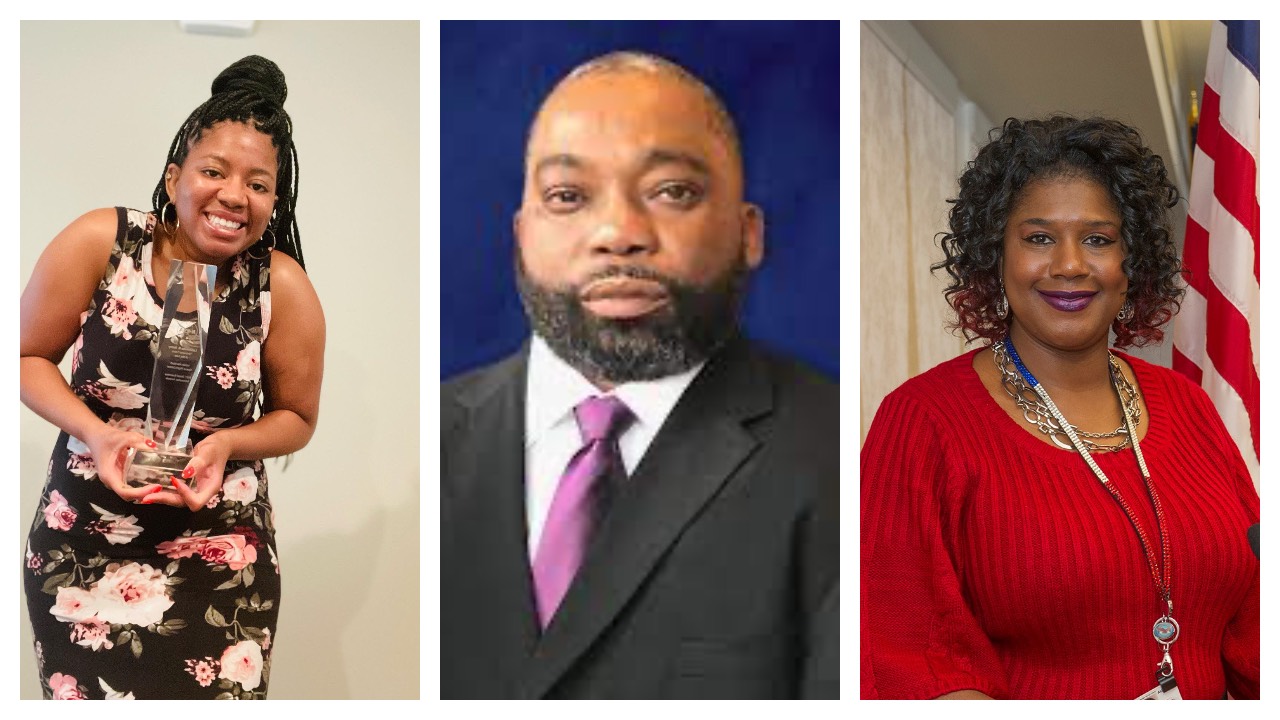
Three members of the Marshall Space Flight Center team were recognized at NASA’s agency-level Small Business Advocates Award for fiscal year 2021. Pictured from left, LaBreesha Batey, Dr. Enrique Jackson, and Angela Lovelady were named Technical Team of the Year for their work on a project titled, “Investigating the Performance Characteristics of Auxetic Foams in Neuropathy Treatment Applications Project,” at a virtual ceremony in May.
The project, which focuses on developing a neuropathic aid for returning astronauts, grew out of a pitch that Batey, who is the project lead, first made at Marshall’s 2018 NASA Tech Tank event, which was a “Shark Tank”-type event for employees to pitch ideas of innovation and technology. The awards recognize outstanding efforts in developing and implementing innovative practices in support of the agency’s small business program. Sponsored by the Office of Small Business Programs (OSBP), these annual awards acknowledge the contributions made by NASA civil servant personnel throughout the agency.
Designing the Space Launch System
Artemis I is the foundation of humanity’s return to the Moon. The flight test of NASA’s Space Launch System (SLS) rocket and uncrewed Orion spacecraft will thoroughly test the integrated systems before crewed missions. NASA and industry experts evaluated thousands of designs and important aspects to make a reliable and powerful rocket. As the mega Moon rocket prepares for its first launch on Launch Pad 39B at the agency’s Kennedy Space Center in Florida, learn how SLS was designed and how it will play a vital role in the Artemis era of space exploration. Learn more at https://www.nasa.gov/sls
Embracing a Rejected Star
Zeta Ophiuchi is a star with a complicated past, having likely been ejected from its birthplace by a powerful stellar explosion. A new look by NASA’s Chandra X-ray Observatory helps tell more of the story of this runaway star.
Located about 440 light-years from Earth, Zeta Ophiuchi is a hot star that is 20 times more massive than the Sun. Previous observations have provided evidence that Zeta Ophiuchi was once in close orbit with another star, before being ejected at about 100,000 miles per hour when this companion was destroyed in a supernova explosion over a million years ago. Previously released infrared data from NASA’s now-retired Spitzer Space Telescope, seen in a new composite image, reveals a spectacular shock wave that was formed by matter blowing away from the star’s surface and slamming into gas in its path. Data from Chandra shows a bubble of X-ray emission located around the star, produced by gas that has been heated by the effects of the shock wave to tens of millions of degrees.
A team of astronomers led by Samuel Green from the Dublin Institute for Advanced Studies in Ireland has constructed the first detailed computer models of the shock wave. They have begun testing whether the models can explain the data obtained at different wavelengths, including X-ray, optical, infrared and radio observations. All three of the different computer models predict fainter X-ray emission than observed. The bubble of X-ray emission is brightest near the star, whereas two of the three computer models predict the X-ray emission should be brighter near the shock wave.
In the future these researchers plan to test more complicated models with additional physics – including the effects of turbulence, and particle acceleration – to see whether the agreement with X-ray data will improve.
A paper describing these results has been accepted in the journal Astronomy and Astrophysics and a preprint is available here. The Chandra data used here was originally analyzed by Jesús Toala from the Institute of Astrophysics of Andalucia in Spain, who also wrote the proposal that led to the observations.
NASA’s Marshall Space Flight Center manages the Chandra program. The Smithsonian Astrophysical Observatory’s Chandra X-ray Center controls science operations from Cambridge, Massachusetts, and flight operations from Burlington, Massachusetts.
International Space Agency Teamwork puts the Whole World in our Hands
By Dauna Coulter
NASA data scientist Dr. Manil Maskey has a calm demeanor and a ready smile. He’s also a trailblazer. With peers around the world, he has created an unprecedented tool to bring our planet down to Earth.
The Earth Observing Dashboard is a user-friendly interactive computer interface for exploring the planet and tracking its changes over time. This knowledge can help us understand our own role in its evolution and guide use of its resources.
COVID-19 triggered the tool’s creation.
“As people across the globe isolated and sheltered from the global pandemic, Earth began to change,” said Maskey at NASA’s Marshall Space Flight Center. “The sky seemed a little bluer, the air a little fresher, the water clearer. Some important officials from space agencies took notice.”
Their discernments prompted a decision by NASA, the European Space Agency (ESA), and the Japan Aerospace Exploration Agency (JAXA) to pool resources for a closer look.
Maskey was tapped to lead a NASA team of Earth scientists, data engineers, communication personnel, and software developers in working with counterparts at ESA and JAXA. The collaborative team was given just two months to launch a publicly accessible COVID-19 Dashboard to monitor changes wrought by the pandemic.
It was a tall order, but with the situation rapidly evolving there was no time to lose.
During that short period, they mined a wealth of data about our planet from their respective space agencies. The team created stories and interactive tools to showcase examples of changes under five themes: economic activities, air quality, greenhouse gas, agricultural activity, and water quality. Users can explore, visualize, and compare the data to draw their own conclusions.
“We launched the dashboard in June 2020, and its use by both experts and the general public to make notable observations demonstrated its success,” Maskey said.
Those successes inspired Earth science leadership from the space agencies to recommend its enrichment to craft the Earth Observing Dashboard.
The team used existing products from the three space agencies, transformed them into dashboard-ready form, added new indicators — biomass and cryosphere — and developed more stories around environmental changes and what they mean for everyone. Users can explore countries and regions across the world to see how the indicators in specific locations change over time.
The international team unveiled the Earth Observing Dashboard on May 26 at European Space Agency’s Living Planet Symposium in Bonn, Germany. It was a hit.
Maskey bestows some credit on the pandemic.
“COVID-19 taught us that transforming data for a storytelling dashboard opens Earth science up for everyone,” he said. “Storytelling is a format people enjoy and understand. Information about our planet should make sense not just to scientists, but also to John and Jane Doe up the street. With the Earth Observation Dashboard, you can get all levels of information in a one-stop-shop. It’s open science at its finest.”
He also lauds cloud computing.
“It helped tremendously that we were experienced operating in the cloud computing environment here at Marshall,” he said. “This gave us a common open platform for collaboration across three time zones. And cloud computing made data processing and delivery efficient, as we didn’t have to download data locally.”
Maskey attributes success mostly to the international team.
“From our IMPACT group here at Marshall, to NASA Headquarters personnel, to our far-away colleagues from ESA and JAXA, these people really care,” he said. “They got up at all times of day and night to attend virtual meetings and work long hours. I think that, like me, they had felt powerless in the face of COVID-19. The pandemic dashboard gave us a way to use our skills and education to make a difference. And we continued to do so, together, to create an even more useful tool.”
Of the team members far away, Maskey noted, “I never met any of them until a few weeks ago, at the Living Planet Symposium in Germany.”
He smiled and added, “It was good to see them all in 3D and hug them.”
Benefits of Space Station Research, Development Highlighted on ‘This Week at NASA’
Some of the benefits of International Space Station research are highlighted on “This Week @ NASA,” a weekly video program broadcast on NASA-TV and posted online.
The 11th annual International Space Station Research and Development Conference took place July 25-28 in Washington. In collaboration with NASA, the conference was hosted by the American Astronautical Society and the Center for the Advancement of Science in Space. The event coincided with the release of the 2022 edition of the International Space Station Benefits for Humanity publication.
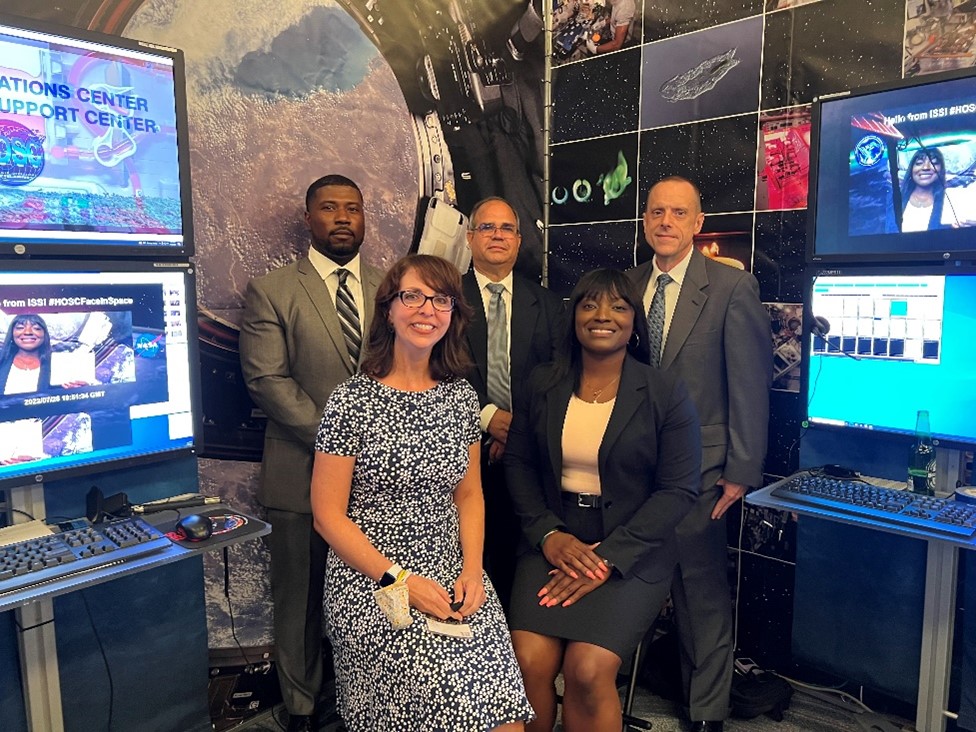
The digital book, which is available online, is filled with examples of how people on Earth have benefited from research conducted in the microgravity environment of the space station. For more about the groundbreaking discoveries, benefits for humanity, and how the agency and its commercial and international partners are maximizing research and development aboard the space station, check out nasa.gov/stationbenefits.
Several team members from the Human Exploration Development & Operations Office at NASA’s Marshall Space Flight Center attended the conference. The Payload Operations Center at Marshall houses the International Space Station Payload Operations Integration Center, the Laboratory Training Complex and simulation rooms used to prepare for space station expeditions.
View this and previous episodes at “This Week @NASA” on NASA’s YouTube page.











